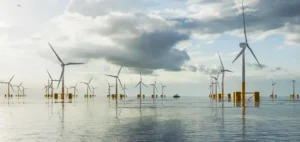Ørsted, world leader in offshore wind power, innovates with the use of heavy-lift drones (HLCD) to optimize operations at the Borssele 1&2 offshore wind farm.
This deployment marks a significant step forward in efficiency and safety in the offshore wind sector.
The drones transport cargo weighing up to 100 kg between a ship and Borssele’s 94 wind turbines, significantly reducing operational time and costs.
Advances and Applications
Building on previous successful trials, notably at the Hornsea 1 wind farm in the UK, Ørsted is now using drones capable of transporting heavy loads over an extensive operational campaign.
With a wingspan of 2.6 meters, these aircraft can make deliveries in four minutes per turbine, compared with around six hours using conventional methods.
This increased efficiency means that tasks can be completed 10 to 15 times faster than before.
Impact on safety and the environment
The use of drones for cargo delivery not only reduces time and costs, but also improves safety and operational efficiency.
Turbines do not need to be stopped during deliveries, minimizing work interruptions.
In addition, this method reduces the risk to personnel and cuts the number of ship trips, thus helping to reduce carbon emissions.
Partnerships and prospects
Ørsted is leading the industry with this large-scale deployment of heavy-lift drones in operational campaigns.
The company is actively seeking partnerships with leading cargo drone operators and service providers to strengthen its supply chain.
Rasmus Errboe, Ørsted’s Commercial Director and Deputy CEO, emphasizes that these innovations not only improve safety and reduce costs, but also strengthen the business fundamentals of offshore wind for investors, governments and companies.
In summary, Ørsted continues to transform the offshore wind sector by adopting innovative technologies that improve safety, reduce costs and lower carbon footprints, positioning offshore wind as an increasingly competitive and attractive source of renewable energy.






















